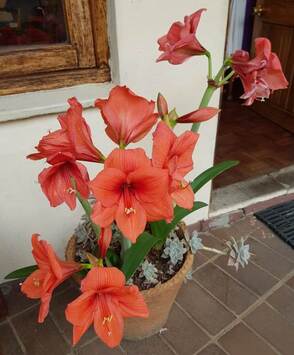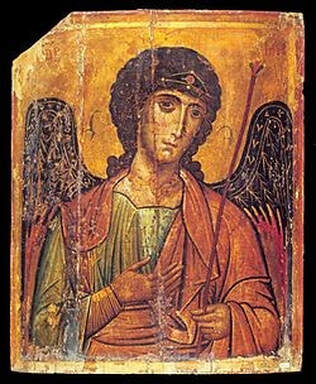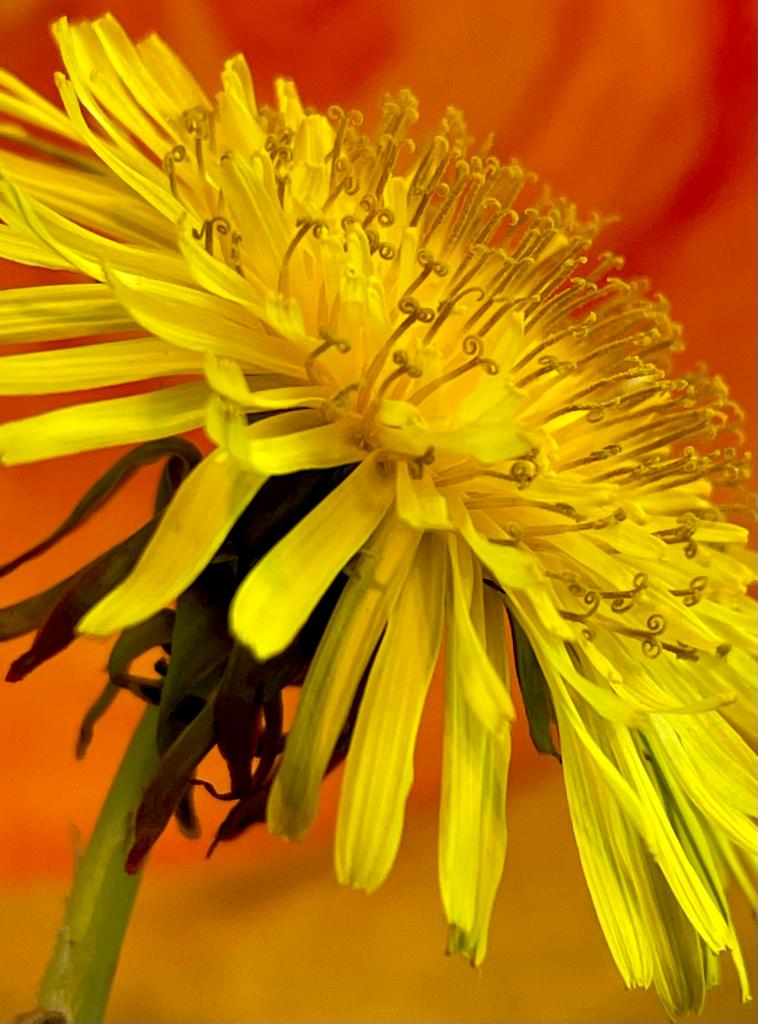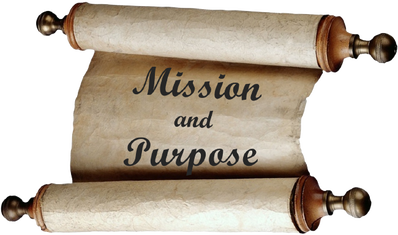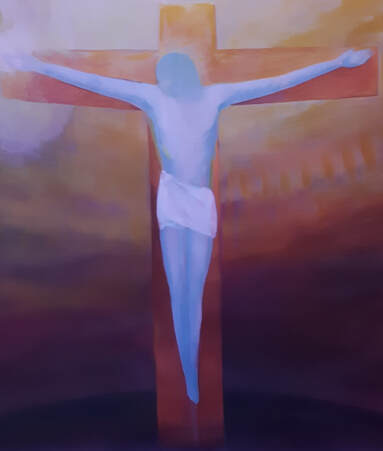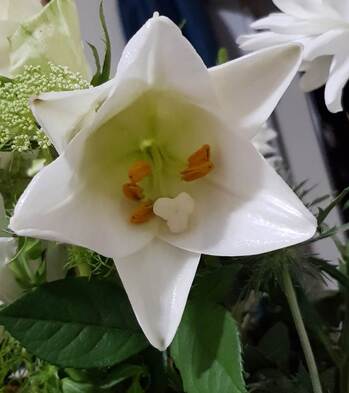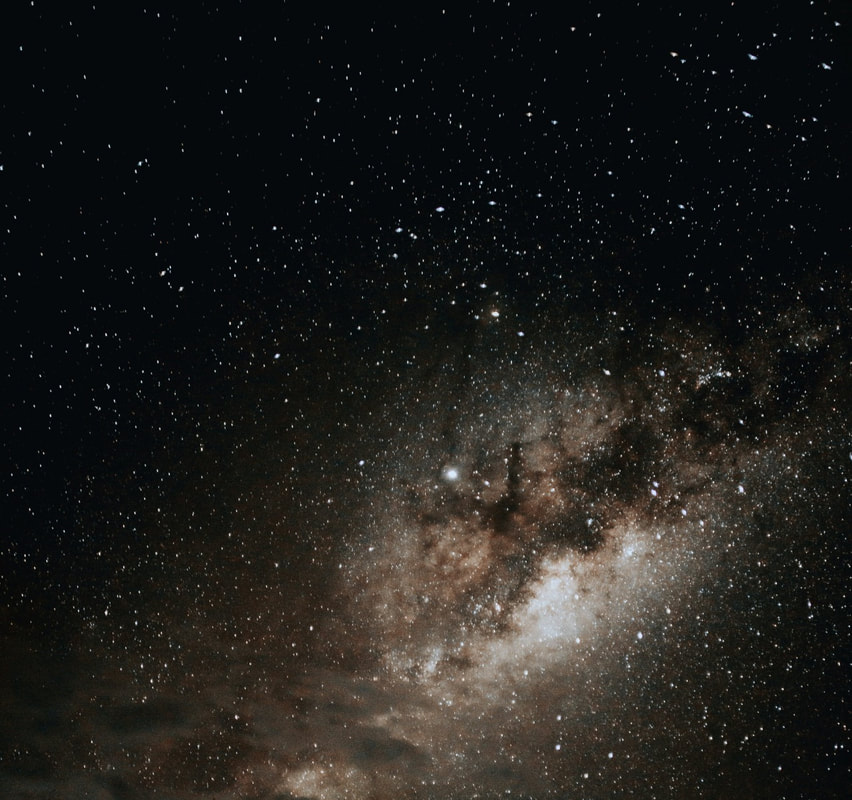Contemplations
The purpose of earthly existence
by Rev. Michaël Merle
A congregant shared with me recently an expression (saying) he had heard as a young person: “The purpose of a person’s life is to raise a child, write a book and plant a tree.” At first, he had not thought much of this saying but with time its wider application seemed to make more and more sense to him. Upon hearing it, I was struck by the wider implications, too. Here are some thoughts on it to accompany us as we prepare for Christmas by embarking on a new year in the Christian calendar with the season of Advent:
What does it mean to raise a child? It may mean what appears obvious upon first hearing: that a person is responsible for raising their child or children. It also has the wider application (especially for those who do not have children) that aligns with the West African saying: “It takes a village to raise a child”. We all participate in the development and raising of the next generation. This is done in the way in which we live our lives as an example for the next generation as well as the way that, in freedom, we support their development and the unfolding of their interests and destinies. It is in this spirit of Consciousness Soul life that in the sphere of freedom (the liberty sphere) Waldorf education arose. This education is focused primarily on human development and unfolding of the spirit in human life on earth: the integration of the soul-spirit existence of a human being into a living bodily experience on earth. It is also true that each person grows up to become responsible for their own development and education. In truth all education is self-education, albeit under the guidance and support of teachers, mentors and parents. We become responsible for raising the child we are into the adult we seek to become. In this way the renewed Christian path undertaken in freedom can be of great benefit.
Most of us will not write a book that will be published and sold in a bookstore for others to buy and read. But, we all will write something of our lives into society and this “book” that is us, expressed in our words and actions, will be read by all who meet us, come to know us and learn to love us. The contents of this book that is us develops in the realm of freedom, but it is expressed in the world of lawful social interaction (the realm of equality of expression and respect for the rights of the individuality of others). What book have we written with our lives? What impression has it had? Has it been quite forgettable or deeply impactful (at least upon those who have taken the time to read it)? Our book should not violate the books of others, nor encroach on their writing. It should stand alongside other books with dignity, compassion, insight, wisdom and integrity.
What does it mean to raise a child? It may mean what appears obvious upon first hearing: that a person is responsible for raising their child or children. It also has the wider application (especially for those who do not have children) that aligns with the West African saying: “It takes a village to raise a child”. We all participate in the development and raising of the next generation. This is done in the way in which we live our lives as an example for the next generation as well as the way that, in freedom, we support their development and the unfolding of their interests and destinies. It is in this spirit of Consciousness Soul life that in the sphere of freedom (the liberty sphere) Waldorf education arose. This education is focused primarily on human development and unfolding of the spirit in human life on earth: the integration of the soul-spirit existence of a human being into a living bodily experience on earth. It is also true that each person grows up to become responsible for their own development and education. In truth all education is self-education, albeit under the guidance and support of teachers, mentors and parents. We become responsible for raising the child we are into the adult we seek to become. In this way the renewed Christian path undertaken in freedom can be of great benefit.
Most of us will not write a book that will be published and sold in a bookstore for others to buy and read. But, we all will write something of our lives into society and this “book” that is us, expressed in our words and actions, will be read by all who meet us, come to know us and learn to love us. The contents of this book that is us develops in the realm of freedom, but it is expressed in the world of lawful social interaction (the realm of equality of expression and respect for the rights of the individuality of others). What book have we written with our lives? What impression has it had? Has it been quite forgettable or deeply impactful (at least upon those who have taken the time to read it)? Our book should not violate the books of others, nor encroach on their writing. It should stand alongside other books with dignity, compassion, insight, wisdom and integrity.
|
We live in a world that needs all of us to physically plant a tree. However, the saying goes far further than keeping us all engaged in many days of Arbour Commemoration. We are not only responsible to care for the earth as stewards but are now, in Christ, called to be co-creators, and with the Spirit to recreate the face of the earth. The symbol of the tree is so powerful that it has captured the human imagination as a symbol of our human development. We have become over time what in the story in Genesis describes our early aspiration: to become a Tree of Knowledge, to develop the discernment we need to know things and how to use that knowledge for good. The Bible gives us a wonderful tree-picture of our future becoming: the Tree of Life. We are to become masters of this Tree, a Tree that in the future bears fruit in all twelve months of the year and whose leaves are for the healing of all people. This is a true becoming in the realm of fraternal care and the means for all to have the opportunity to live: a true economy of love.
And so, as we prepare for another year of Christian festivals that speak to the unfolding of the human spirit and the becoming of the future human being, may each person raise their inner child, write the book of their words and deeds and plant themselves in the world as a sapling of the Tree of Life. |
Revelation
by Rev. Michaël Merle
What does it mean when we say that we have had a revelation? It usually means that we have seen something for the first time that was previously obscured or hidden. Now, we see! What is a surprising and previously unknown fact has been disclosed. We are familiar with the sight at the opening ceremony of a new building: a plaque in the wall may be covered by a cloth or small curtain, which is then removed or opened by the guest of honour and the plaque commemorating the event is revealed. The curtain parts or rises in the theatre to reveal the sets on the stage and herald the beginning of the action of the play. The Greek word for revelation is apokalypsis and means both unveiling or revelation.
|
We begin our Act of Consecration of Man, the action of consecrating the future human being in us and in the human community at large, by acknowledging that we are fulfilling this ritual out of the revelation of Christ. Here we are referencing the truth or knowledge communicated to us through the person and action of Christ. From the opening passage of Mark’s Gospel we know that a new message is being announced to us from the realm of the angelic world (the world of heavenly messengers). This is captured in one word: evangelion. In English this word is: Gospel. The whole of the Gospel forms part of the revelation of God: God’s revealing of himself, of the truth and knowledge we need to understand ourselves, understand God, and understand our relationship to him. In the opening of Mark’s Gospel we hear that John the Baptist witnesses the divine words spoken at the incarnation of Christ fully into Jesus of Nazareth: “This is my beloved Son in whom I am fully revealed.” It is through Christ, in full unity with the Holy Spirit, that the Father-God fulfils the revelation of himself. Christ reminds Philip who asks that the disciples be shown the Father (have him revealed to them): “He who has seen me has also seen the Father … I am in the Father and the Father is in me.”
|
The great mystery of revelation is that God’s act of creation and the unfolding evolution of being is an act of self-revelation and self-realization. We are part of the revelation and realisation of the divine-self. A simple dictionary definition of one meaning of revelation captures the essence of this very well: “the divine disclosure to humans of something relating to human existence.”
May we feel ourselves the beneficiaries - and the participants in the action - and the very essence of: the revelation of God.
May we feel ourselves the beneficiaries - and the participants in the action - and the very essence of: the revelation of God.
Consecrating the future Human Being
by Rev. Michaël Merle
“Michael wishes in future times to take his seat in the hearts, in the souls of earthly human beings, and this is to begin in the present age. It is about a guidance of Christendom into more profound truths, inasmuch as Christ is meant to find more understanding among human beings; to live His way into humanity as a Sun-being through the Sun-spirit – Michael – who has always ruled over the intelligence, and who now can no longer administer it in the cosmos, but in the future wishes to administer it through the hearts of human beings!” (Rudolf Steiner, 21 August 1924)
|
We are living in a very challenging and exciting time: the time is truly now. It is the time of Michael and the shift of his administration (his activity of managing and organising) of intelligence from a cosmic space to an inner human-heart space. It is this guidance that we hear so clearly in the Michaelmas Epistle in our Act of Consecration of the Human Being: Michael gathers up the free power from the human heart which can bear that which is earthly to the heights of heaven, and his hand forms to beckon us to follow him now in the way of the Mystery of Golgotha so that in the future our discernment as earthly human beings of the true meaning of this Mystery will work on in us as a creative force that will bring light to life. This discernment (this divining of the true meaning of the Mystery of the Deed of Life and Death) will not spring from a reading of the cosmic script. It will now and in the future spring from the discernment of the human heart, of the human soul of earthly human beings. It is here in our time on earth that we can fathom the great mystery of love. Michael guides us in this new capacity of discernment. We are now truly able to eat of the fruit of the tree of knowledge and thereby bear in ourselves the new fruit of this eating: wisdom. The intelligence that we need to be able to understand the world as it truly is and to take the knowledge we have acquired into the realms of wisdom and love is guided and cared for by the ministry of Michael. In this way we develop (evolve) into the future Human Being – a being of matter transubstantiated to Spirit.
|
May this Michaelmas bring us ever closer to this guidance and instruction: the path of the true insight, springing from our hearts, of the Mystery of Love – the Deed of Christ on the earth.
A higher vision, clear hearing and the capacity to proclaim
|
by Rev. Michaël Merle
The two healings that appear in our Gospel readings on the fifth and sixth Sundays of the ten-week cycle of Trinity Time between St John’s and Michaelmas bring us the healing of the blind man and then the deaf mute. What may surprise some is that the blind man is described (as was common at the time) as a man of impaired vision. This would apply as a description across a spectrum from poor eyesight, of one kind or another, to complete blindness. Likewise, the deaf mute is described as hard of hearing and blunted of tongue: in other words, someone who has difficulty hearing and speaking without necessarily being completely deaf and fully mute. When asked by Jesus what he would will that Jesus do for him, the blind man asks to have his higher (upper) vision restored. This implies that he may not have been blind to the outer appearance of things in the physical world but that he felt the loss of his higher spiritual vision. In the same way the deaf mute has his inner spiritual hearing restored and is described as able to not just speak but proclaim (expressing the full reality of the grace of God upon his humanity). |
What we need at this time (and also in this place) is to work on renewing our spiritual vision. This is not so much a call to work on our world view (our sound spiritual perspective of creation, life and the future unfolding of the world) nor of our own inner picturing of our destiny (our meaning and purpose in the world and how we effectively manifest it), positive and good as those views are. It is a question of developing a renewed view of our Community life, our being participants (congregants and members) of The Christian Community in Johannesburg. This renewed vision needs to respectfully remember what has been while courageously stepping into the future which will look quite different from the past. It is the possibility of realising the movement that is also part of our name: Movement for Religious Renewal. It is from this new view that we will be able to hear the inspirations of the Spirit and to find the way to express ourselves as a Christian Community here in Johannesburg.
In the ladder of the senses, that Rudolf Steiner explained, the sense of sight (which leads beyond physical sight to insight and understanding, to the imagination of the Spiritual which we need to cultivate) comes before the sense of hearing (which carries with it the deeper aspects of true listening and the capacity for Spiritual inspirations we need to develop) and speech (which is part of the way in which we proclaim something of our true unfolding humanity). A new (renewed) vision will lead to a new way of hearing and speaking – a new projection of our Community into the world of Johannesburg and beyond.
In the ladder of the senses, that Rudolf Steiner explained, the sense of sight (which leads beyond physical sight to insight and understanding, to the imagination of the Spiritual which we need to cultivate) comes before the sense of hearing (which carries with it the deeper aspects of true listening and the capacity for Spiritual inspirations we need to develop) and speech (which is part of the way in which we proclaim something of our true unfolding humanity). A new (renewed) vision will lead to a new way of hearing and speaking – a new projection of our Community into the world of Johannesburg and beyond.
For the Way
by Rev. Michaël Merle
In the Act of Consecration of Man, the action of the declaring sacred the human being in becoming, we hear that Jesus, the Christ, took the bread at the Last Supper for the Way. What do we understand by this expression? What is the way that we follow when we connect with this action of Christ and receive the bread (made sacred as the Body of Christ) in communion?
The ancient Chinese philosophy of Taoism (Daoism) emphasises living in harmony with the Tao, literally the Way. The Tao is generally defined as the source of everything and the ultimate principle underlying reality. As Christians we understand this idea as the Way of Christ, the Way of the Alpha and Omega, the one who is the originator and the ultimate fulfilment and purpose of the world. What is this Way of Christ, this path or process that we walk as Christians, this journey in the evolution of the human being in becoming? This is the path of the human: being, growing and becoming. It is the way of healing and making whole. It clarifies that as human beings we have a destiny, an evolutionary point or place to which we are progressing. Going on this way is both part of our essential nature, our human nature by design, and part of working from Christ, walking in the transubstantial way that he makes possible for us and for the ultimate unfolding of the human becoming of our future. This is the way we walk with Christ, the way Christ walked with those to whom he says: I stand at peace with the world. We come to realise that this peace with the world can be ours also because Christ gives it to us. It is what we can experience when through our thinking and willing we join with Christ on this way which leads us in the evolving of the world. This is not a simple resting in Christ nor a submission to his grace. It is wrestling. We have, with the strength given us by Christ, to wrestle free of the load of sin. We are not wrestling ourselves free of sin, but rather from the load that prevents us from waking on the way.
Being on the way, being underway in our development, makes clear that we are not finished. We are, one could say, still a work-in-progress. How can we accomplish this? We cannot do it alone. We are able to participate in this accomplishment when we can truly connect to the living force of Christ, when conscious of our humanity, and experiencing the Christ in that humanity, we are able to feel and know the sustenance of Christ for the way.
In the Act of Consecration of Man, the action of the declaring sacred the human being in becoming, we hear that Jesus, the Christ, took the bread at the Last Supper for the Way. What do we understand by this expression? What is the way that we follow when we connect with this action of Christ and receive the bread (made sacred as the Body of Christ) in communion?
The ancient Chinese philosophy of Taoism (Daoism) emphasises living in harmony with the Tao, literally the Way. The Tao is generally defined as the source of everything and the ultimate principle underlying reality. As Christians we understand this idea as the Way of Christ, the Way of the Alpha and Omega, the one who is the originator and the ultimate fulfilment and purpose of the world. What is this Way of Christ, this path or process that we walk as Christians, this journey in the evolution of the human being in becoming? This is the path of the human: being, growing and becoming. It is the way of healing and making whole. It clarifies that as human beings we have a destiny, an evolutionary point or place to which we are progressing. Going on this way is both part of our essential nature, our human nature by design, and part of working from Christ, walking in the transubstantial way that he makes possible for us and for the ultimate unfolding of the human becoming of our future. This is the way we walk with Christ, the way Christ walked with those to whom he says: I stand at peace with the world. We come to realise that this peace with the world can be ours also because Christ gives it to us. It is what we can experience when through our thinking and willing we join with Christ on this way which leads us in the evolving of the world. This is not a simple resting in Christ nor a submission to his grace. It is wrestling. We have, with the strength given us by Christ, to wrestle free of the load of sin. We are not wrestling ourselves free of sin, but rather from the load that prevents us from waking on the way.
Being on the way, being underway in our development, makes clear that we are not finished. We are, one could say, still a work-in-progress. How can we accomplish this? We cannot do it alone. We are able to participate in this accomplishment when we can truly connect to the living force of Christ, when conscious of our humanity, and experiencing the Christ in that humanity, we are able to feel and know the sustenance of Christ for the way.
The Witness of John
by Rev. Michaël Merle
The Greek word μάρτυς, mártys, originally meant "witness". When Christians were killed after giving their witness, their testimony of faith in Christ, they were then remembered for the courage of their faith expression, their testimony, their martyrdom. To be a martyr did not mean to die but rather to be prepared to die, if that was the outcome, so long as one truthfully proclaimed what one had seen or come to know and understand from personal experience, in other words the evidence of one’s sight and insight.
The great action of John the Baptist, his true and meaningful destiny was to be the witness, the truth teller of what he had seen and perceived in the Baptism of Jesus in the Jordan. John’s preaching and teaching, his baptism by water and his message of renewal (repentance – the changing of heart and mind in the soul disposition of human beings) was aimed at preparing the people for the coming of the Kingdom of God. This Kingdom (the arrival of the kingship of the true “I am” into the body of Jesus of Nazareth) was witnessed by John. He fulfilled his destiny in this way:
The Greek word μάρτυς, mártys, originally meant "witness". When Christians were killed after giving their witness, their testimony of faith in Christ, they were then remembered for the courage of their faith expression, their testimony, their martyrdom. To be a martyr did not mean to die but rather to be prepared to die, if that was the outcome, so long as one truthfully proclaimed what one had seen or come to know and understand from personal experience, in other words the evidence of one’s sight and insight.
The great action of John the Baptist, his true and meaningful destiny was to be the witness, the truth teller of what he had seen and perceived in the Baptism of Jesus in the Jordan. John’s preaching and teaching, his baptism by water and his message of renewal (repentance – the changing of heart and mind in the soul disposition of human beings) was aimed at preparing the people for the coming of the Kingdom of God. This Kingdom (the arrival of the kingship of the true “I am” into the body of Jesus of Nazareth) was witnessed by John. He fulfilled his destiny in this way:
|
“There came a man, sent from God, his name was John. He came to bear witness, to witness to the light and so to awaken faith in all hearts. He himself was not the light, he was to be a witness to the light.”
(John 1: 6-8) |
|
It is the soul content of John the Baptist that fills the consciousness of John, the beloved disciple, when he is at the foot of the cross. This presence of the great witness inspires the Roman Centurion at the cross to witness the events of the crucifixion and realise that: “This really was the Son of God.” This is the realisation that comes to John in witnessing the voice from the heavens: “This is my beloved Son; in him I am fully revealed.” The witness of John the Baptist lives in the witness of John in the revelation of the spiritual realities of this earth cycle which he records in the Book of Revelation.
How do we live out our witnessing to that we have seen with the eyes of spirit and which we have come to know in the experience of faith? How do we embrace our being like John: a true witness to the light? This is the heart of the season of St John: to find the sight and insight we need to be a true martyr, a true witness, a faithful disciple that goes out to proclaim and so becomes a true apostle. We are sent into earth incarnation from the spiritual world in order to bear witness to the reality of Christ in the world and through this witnessing discover how to act in the sense of Light, the sense of Love. |
What does it mean to be a free human being?
by Rev. Michaël Merle
It seems quite right when contemplating what it means to be a free human being to turn to words spoken by Rudolf Steiner in 1919. The First World War had ended and many were contemplating the peace and freedom that was so long desired during the heavy days of war. Steiner’s approach links freedom to the spiritual development of the human being. The lecture, now titled: Freedom of Thought and Societal Forces – Implementing the Demands of Modern Society well captures the essence of Steiner’s perspective.
“Are humans free beings, that can make resolves with genuine responsibility out of their souls, or are they harnessed to a natural or spiritual necessity like a creature of nature? People have asked this question, it seems, for millennia, and they pose it today in the same way still. This question is already the great error.
We can’t question in this way. Rather, the question of freedom is a question of human development, of such human development that in the course of youth, or perhaps in later life, we unfold forces in ourselves that we don’t simply have naturally. We can’t ask at all whether human beings are free. By nature we are not. But we can gradually make ourselves more free by developing forces that slumber within us, and that nature doesn’t awaken. Humans can become ever more free. We can’t ask whether humans are free or unfree, but rather only: Is there a path toward the attainment of freedom that is open to us as humans? And there is such a path… When as human beings we rise up and develop an inner life in ourselves, so that we grasp moral impulses for our actions in pure thoughts, we really can lay a foundation for impulses of thinking to guide our actions, and not just instinctive emotions…
It seems quite right when contemplating what it means to be a free human being to turn to words spoken by Rudolf Steiner in 1919. The First World War had ended and many were contemplating the peace and freedom that was so long desired during the heavy days of war. Steiner’s approach links freedom to the spiritual development of the human being. The lecture, now titled: Freedom of Thought and Societal Forces – Implementing the Demands of Modern Society well captures the essence of Steiner’s perspective.
“Are humans free beings, that can make resolves with genuine responsibility out of their souls, or are they harnessed to a natural or spiritual necessity like a creature of nature? People have asked this question, it seems, for millennia, and they pose it today in the same way still. This question is already the great error.
We can’t question in this way. Rather, the question of freedom is a question of human development, of such human development that in the course of youth, or perhaps in later life, we unfold forces in ourselves that we don’t simply have naturally. We can’t ask at all whether human beings are free. By nature we are not. But we can gradually make ourselves more free by developing forces that slumber within us, and that nature doesn’t awaken. Humans can become ever more free. We can’t ask whether humans are free or unfree, but rather only: Is there a path toward the attainment of freedom that is open to us as humans? And there is such a path… When as human beings we rise up and develop an inner life in ourselves, so that we grasp moral impulses for our actions in pure thoughts, we really can lay a foundation for impulses of thinking to guide our actions, and not just instinctive emotions…
|
Then humans approach freedom. Freedom is likewise a child of thought which is grasped in spiritual super-sensible vision, and not under an outer compulsion, just as it’s the child of genuine, devoted love, of love for the object of our action.”
As a child of pure thought and devoted love, we can come to realise the nature of our freedom as human beings when we offer ourselves in The Act of Consecration of Man, the service that consecrates the future human being in becoming in us, in the words: “Thinking in purity, Hoping for salvation, Working from Christ.” We are free in our purity of thought, in our hope of being made whole, in our co-working with Christ, when the Christ-impulse in us is the source of our capacities of soul. May this reality: the becoming of spirit in our souls, be evermore the reality of our lives. |
Connecting to the Risen Christ through the renewed Sacraments
by Rev. Michaël Merle
The eastern Christian greeting for Easter goes: “Christ is Risen!”
The response is to say: “Yes, He is Risen indeed!”
The mission of The Christian Community remains a question that we are exploring and investigating. What are the features that characterise us and make our mission ever clearer? Central to our mission is to uphold and cultivate the renewed Sacraments in order that they are able to renew all aspects of life towards an independent and free relationship to the Risen Christ in all His present and future manifestations.
It would be quite fair to say that The Christian Community seeks to create and lead healthy and sustainable communities that have as their central focus the manifestation of the renewed rituals and Sacraments. We are a movement that lives with seven renewed Sacraments. These are rituals which allow the Risen Christ to become a present reality. Thus, the Sacraments are opportunities to connect with the living Risen Christ. Is this reality a true experience for us? Are we able to connect to the living Risen Christ in our sacramental celebrations?
It is through the Sacraments we can learn to perceive Him and His powers working in all aspects of life: recognising Him in what renews. Do we feel this as the foundation of our experience?
We recognise these rituals and Sacraments of our Movement as authentic revelations, from Christ Jesus Himself. The Sacraments, as expressions of the Christ as the encounter with God, are what makes Christ present to us as the one who guides us. This is the process of learning to become ever more fully human. May our Easter time be filled with the joy of experiencing the depths of Christ’s resurrection!
The eastern Christian greeting for Easter goes: “Christ is Risen!”
The response is to say: “Yes, He is Risen indeed!”
The mission of The Christian Community remains a question that we are exploring and investigating. What are the features that characterise us and make our mission ever clearer? Central to our mission is to uphold and cultivate the renewed Sacraments in order that they are able to renew all aspects of life towards an independent and free relationship to the Risen Christ in all His present and future manifestations.
It would be quite fair to say that The Christian Community seeks to create and lead healthy and sustainable communities that have as their central focus the manifestation of the renewed rituals and Sacraments. We are a movement that lives with seven renewed Sacraments. These are rituals which allow the Risen Christ to become a present reality. Thus, the Sacraments are opportunities to connect with the living Risen Christ. Is this reality a true experience for us? Are we able to connect to the living Risen Christ in our sacramental celebrations?
It is through the Sacraments we can learn to perceive Him and His powers working in all aspects of life: recognising Him in what renews. Do we feel this as the foundation of our experience?
We recognise these rituals and Sacraments of our Movement as authentic revelations, from Christ Jesus Himself. The Sacraments, as expressions of the Christ as the encounter with God, are what makes Christ present to us as the one who guides us. This is the process of learning to become ever more fully human. May our Easter time be filled with the joy of experiencing the depths of Christ’s resurrection!
What is our Mission and Purpose?
|
by Rev. Michaël Merle
This question has been part of an ongoing reflection and consideration in our movement, The Christian Community, from its foundation, and evermore so since the centenary celebrations in September last year. So, what can we say about our mission and purpose? We are part of a worldwide movement that expresses a new conception in the practice of Christian life appropriate to the constitution of the modern human being. We are now able to bring reflective consciousness to our understanding and knowledge of the Christian religious movement. |
The individual’s questions and search for truth and meaning are welcome.
Through Anthroposophy, as brought to light by Rudolf Steiner, the path to understanding our relationship to Christ is opened-up and expanded. From its name we come to understand that Anthroposophy is a path, a way of being that leads to deeper insight and understanding from the wisdom that is imbued in the evolving human being as a spiritual and moral being: from the Greek ‘Anthropos’ (the expression of the human being – the being capable of being moral) and ‘Sophia’ (wisdom).
Through the exercise of Anthroposophy, we are brought to the opportunity to understand the evolving nature of Christ and his deeds. We can become aware of our essential reliance on him for our evolving and the future of humanity. ‘In Jesus the Christ entered as a human being into the earthly world’. This is the basis of the new dogma-free theology that encourages us to make this understanding our own through our capacity to think for ourselves.
We strive to fulfil the purpose of the human being, which is to be a co-creator in evolution.
To this aim, we undertake, in undying enthusiasm of the heart, to align ourselves with Christ's Creation, and Christ's Deed of Death and Resurrection.
This finds its expression in the conscious choice to participate in freedom in the continuously renewing power of the sacraments.
The priests and trustees in Johannesburg have also contemplated this all important question in terms of finding an appropriate expression for our work that clarifies who we are. This would form the crux of an internal document: an expression of who we are in our terms and understanding. This would be a companion piece to our legal PBO (Public Benefit Organisation) Constitution.
Through Anthroposophy, as brought to light by Rudolf Steiner, the path to understanding our relationship to Christ is opened-up and expanded. From its name we come to understand that Anthroposophy is a path, a way of being that leads to deeper insight and understanding from the wisdom that is imbued in the evolving human being as a spiritual and moral being: from the Greek ‘Anthropos’ (the expression of the human being – the being capable of being moral) and ‘Sophia’ (wisdom).
Through the exercise of Anthroposophy, we are brought to the opportunity to understand the evolving nature of Christ and his deeds. We can become aware of our essential reliance on him for our evolving and the future of humanity. ‘In Jesus the Christ entered as a human being into the earthly world’. This is the basis of the new dogma-free theology that encourages us to make this understanding our own through our capacity to think for ourselves.
We strive to fulfil the purpose of the human being, which is to be a co-creator in evolution.
To this aim, we undertake, in undying enthusiasm of the heart, to align ourselves with Christ's Creation, and Christ's Deed of Death and Resurrection.
This finds its expression in the conscious choice to participate in freedom in the continuously renewing power of the sacraments.
The priests and trustees in Johannesburg have also contemplated this all important question in terms of finding an appropriate expression for our work that clarifies who we are. This would form the crux of an internal document: an expression of who we are in our terms and understanding. This would be a companion piece to our legal PBO (Public Benefit Organisation) Constitution.
The Temptation and The Passion: The Mystery of Golgotha
by Rev. Michaël Merle
We may consider the Temptation of Christ (in the desert facing the adversary) from many different perspectives. It is also possible to puzzle over what these three temptations (turning stones to bread, being rescued from hurting oneself in a fall, and worshipping the adversarial forces, clearly at work in this world, for the ownership of the world's splendour) might be about? How much can really be subverted or what harm could really come from them – or, at least, from the first two?
We may consider that the temptations subvert the future power made manifest in the Mystery of Golgotha, in the culminating events of Holy Week. The turning of stones to bread would subvert the power of transubstantiation made manifest in the turning of bread into the Body of Christ. Throwing oneself from a great height and avoiding pain would subvert the raising of the Spirit of Christ on the cross and the experience of the pain of death. Accepting the false splendour of the world through false worship would subvert the splendour of divine revelation in the Resurrection and the path to true worship.
We may consider the Temptation of Christ (in the desert facing the adversary) from many different perspectives. It is also possible to puzzle over what these three temptations (turning stones to bread, being rescued from hurting oneself in a fall, and worshipping the adversarial forces, clearly at work in this world, for the ownership of the world's splendour) might be about? How much can really be subverted or what harm could really come from them – or, at least, from the first two?
We may consider that the temptations subvert the future power made manifest in the Mystery of Golgotha, in the culminating events of Holy Week. The turning of stones to bread would subvert the power of transubstantiation made manifest in the turning of bread into the Body of Christ. Throwing oneself from a great height and avoiding pain would subvert the raising of the Spirit of Christ on the cross and the experience of the pain of death. Accepting the false splendour of the world through false worship would subvert the splendour of divine revelation in the Resurrection and the path to true worship.
|
In this consideration the power of Christ in Jesus of Nazareth would have been subverted – put to a futile end rather than taken into constructive action. The power of Christ is present in the transubstantiation we experience in the Act (Action) of Consecration. The Human Being (the divine image and design that lies before us as the fulfilment of our evolved destiny) is consecrated in this power of Christ – now present in the seed impulse in us to bring about this transubstantiation in the human being. Our great temptation today is to abandon our mission and purpose in escaping our responsibilities or falling for the false splendours of material existence.
Christ comes to save us from the false light and from the senses unworthy cravings that we might fulfil, with his grace, the consecration (blessing in newness and completeness) of the human being. How do we engage this power in us and not subvert it? How do we avoid the temptations to ignore that which must transform in us, that which must change in us, so that what we receive in time can truly change into that which brings us everlasting wholeness? This is the challenge to allow the suffering, death, Resurrection and Revelation of Christ to think itself in us. May the power of Christ continue to work in us as we engage in this season of Passiontide. |
Courage for the Truth
|
by Rev. Michaël Merle
Courage is not defined by outer physical strength. The strength to which it refers is in its naming in English: heart-forces. The word comes into our language from Old French, derived from Latin for: from the heart. The common expression “take courage” means to give support, confidence or hope to someone who is struggling or facing adversity. At its core (at the very heart of the matter) courage is the act of overcoming fear. It is an expression of conviction, hence the term ‘the courage of your conviction’. Rudolph Steiner spoke of having Courage for the Truth. What does this entail? How do we find that capacity to overcome any fear or doubt and engage our heart-forces to face and make explicit the truth of any given situation? The world around us, the social, cultural and political world, continues to provide us with a variety of opinions and views, each purporting to represent the truth of a situation, event or circumstance. We also know that deliberate falsehoods are presented as true statements of fact, bringing in the past years the term: fake news to the forefront of our expressions. Do we have the courage of our convictions to give voice to the truth? |
A courageous conversation can take place when we remain fully present in body, soul and spirit to the engagement with the other person. It takes a willingness to take the risk (in overcoming the fear and doubt) and stay focused on that which expresses truly what the conversation is all about. We know that Christ is The Way, The Truth and The Life. Our sense of The Truth (of Christ) comes to us in the gift of language – of true expression in conscious thought. Our gift of speech (which has much creative power but also carries destructive and damaging potential) comes to us through Christ. How we choose to use this gift will depend on our conscious courage to face the truth and find the words to express the reality of things in our world.
When our star begins to speak
by Rev. Reingard Knausenberger
Looking out over the city at midnight, we see the lights twinkling. Every light indicates the presence of human consciousness. Leaving the city and looking upwards, we see the sparkling light of the stars, each star expressing sublime higher consciousness. Every human soul may look up to the stars and know: one of them belongs to me. Yes, everyone truly has ‘their star’. It is good to imagine this star-spangled dome as the cloak of the One, who holds, carries and knows each human soul in their higher true Self.
In the Christmas nights, we re-connect and draw impulses for the whole year ahead from this place where our star is held as a potential future reality.
In celebrating The threefold Act of Consecration of Man at Christmas midnight, Dawn and Day we are in waking presence to this potential and may experience, more and more, how the One, who carries our higher Self becomes present at the altar. During the rest of the year it is a continual endeavour to perceive our true being as an encounter with Christ in the Deed of transubstantiation.
As we begin the new year with Epiphany, this theme of the star continues. Stars become invisible during the day. In daylight we tend to go into a ‘me, me, me’ focused mode. Where has the warmth of hopes and visions, the ‘upward glance’ gone?
In daylight there is now a shift needed from ‘out there’ to ‘in here’. It is not about seeking for something, but rather of a receptivity to noticing, becoming sensitive for perceiving new qualities emerging from invisibility.
Living with Christ is to nurture and uphold an attitude. It is caring for a relationship.
One that brings my star to shine, yes, to speak itself out, in daylight.
A meditation from Rudolf Steiner can give support for this to manifest:
A star stands above my head.
Christ speaks from the star:
Let your soul be carried by my strong power--
I am with you
I am in you
I am for you
I Am your true I.
Looking out over the city at midnight, we see the lights twinkling. Every light indicates the presence of human consciousness. Leaving the city and looking upwards, we see the sparkling light of the stars, each star expressing sublime higher consciousness. Every human soul may look up to the stars and know: one of them belongs to me. Yes, everyone truly has ‘their star’. It is good to imagine this star-spangled dome as the cloak of the One, who holds, carries and knows each human soul in their higher true Self.
In the Christmas nights, we re-connect and draw impulses for the whole year ahead from this place where our star is held as a potential future reality.
In celebrating The threefold Act of Consecration of Man at Christmas midnight, Dawn and Day we are in waking presence to this potential and may experience, more and more, how the One, who carries our higher Self becomes present at the altar. During the rest of the year it is a continual endeavour to perceive our true being as an encounter with Christ in the Deed of transubstantiation.
As we begin the new year with Epiphany, this theme of the star continues. Stars become invisible during the day. In daylight we tend to go into a ‘me, me, me’ focused mode. Where has the warmth of hopes and visions, the ‘upward glance’ gone?
In daylight there is now a shift needed from ‘out there’ to ‘in here’. It is not about seeking for something, but rather of a receptivity to noticing, becoming sensitive for perceiving new qualities emerging from invisibility.
Living with Christ is to nurture and uphold an attitude. It is caring for a relationship.
One that brings my star to shine, yes, to speak itself out, in daylight.
A meditation from Rudolf Steiner can give support for this to manifest:
A star stands above my head.
Christ speaks from the star:
Let your soul be carried by my strong power--
I am with you
I am in you
I am for you
I Am your true I.

